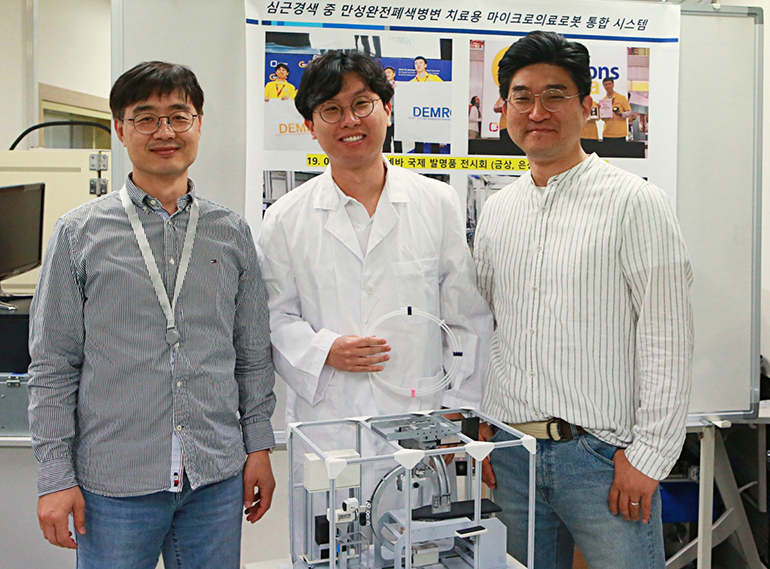Percutaneous coronary intervention is an incredibly useful technique to minimally invasively investigate and treat cardiac issues, such as blockages in the coronary arteries, but it requires a significant amount of skill to perform safely and effectively. Manipulating a guidewire through the tortuous vasculature is not for the faint hearted, with the possibility of perforating a vessel always near. Moreover, as the procedure is frequently undertaken at the bedside, it is impossible for the clinician to avoid X-ray exposure.
Now researchers at Daegu Gyeongbuk Institute of Science and Technology in Korea have developed a magnetic steering system for guidewires in an effort to streamline and improve on percutaneous coronary intervention procedures. At present, manipulating guidewires so that they travel to their final destination in the vasculature requires quite a bit of skill and also usually leads to clinicians being exposed to X-ray radiation. This latest technology involves using an electromagnetic field to precisely steer a magnetic guidewire through the vasculature. This is achieved through a hemispherical arrangement of eight electromagnets under a surgical bed that can be controlled remotely, avoiding X-ray exposure for the operator.
“Cardiovascular diseases are the leading cause of death worldwide, and it is very important to be able to diagnose and treat these diseases in the most minimally invasive way possible,” said Hongsoo Choi, a robotics engineer involved in the study.
Using magnets to control and steer a guidewire is an intriguing alternative, which would allow the physician to sit at a safe distance in a control booth, with X-ray shielding. If executed correctly, it may also be safer for the patient and more precise. The researchers describe their approach as an ‘electromagnetic actuation system’.

The process involves inserting a guidewire that includes a neodymium-iron-boron permanent magnet and additional magnetic composites that make the guidewire highly responsive to the external array of magnets, allowing the clinician to steer it through the vasculature by modifying the applied magnetic field.
So far, the researchers have successfully used the system to steer such a guidewire through the vasculature of a pig under anesthesia. They also plan to modify the system so that it can target vessels in the lungs and nervous system.
“Our proposed electromagnetically controllable microrobotic interventional system could reduce radiation exposure of physicians by empowering them to conduct the procedure remotely in an X-ray shielded control booth using low-strength magnetic fields,” said Choi. “It also does not require the high level of training needed for conducting conventional PCIs.”
Study in Advanced Healthcare Materials: An Electromagnetically Controllable Microrobotic Interventional System for Targeted, Real‐Time Cardiovascular Intervention
